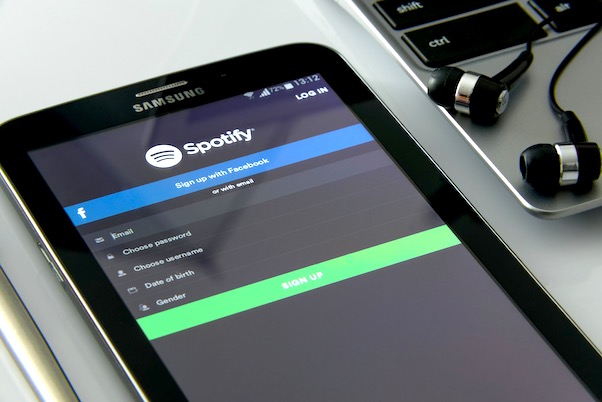What Are Spotify’s Competitive Advantages?

Spotify is the world’s most popular music streaming service, with over 180 million monthly active users and a catalogue of over 82 million songs. Since launching in 2008, Spotify has grown to become the dominant player in the music streaming industry, accounting for over 36% of global streaming revenue. But what has driven Spotify’s meteoric rise to the top? The answer lies in Spotify’s competitive advantages.
Spotify’s success is rooted in several key strengths that set it apart from competing music streaming services. Spotify boasts an enormous user base, provides personalized music recommendations powered by data analytics, has access to an expansive music catalogue, enjoys global reach, and benefits from strong brand recognition. These competitive advantages reinforce each other to fuel Spotify’s leadership position in the market.
In this article, we will analyze the competitive advantages that have enabled Spotify to become the top music streaming platform worldwide. Understanding Spotify’s sources of competitive advantage provides insight into how the company has disrupted the music industry and continues to widen its lead over rivals.
Spotify’s Competitive Advantages
Large User Base
The most significant factor behind Spotify’s dominance is its massive user base. Spotify has over 180 million monthly active users, far exceeding competitors like Apple Music (60 million users) and Amazon Music (55 million users).
This enormous user base gives Spotify a number of major competitive advantages:
- Network effects: The more users Spotify accumulates, the more valuable its platform becomes to other users. Spotify gains access to more user data, its brand recognition grows, and artists and content creators are drawn to its platform. This self-reinforcing cycle makes the platform more attractive over time.
- Market share: With a commanding 36% share of the global music streaming market, Spotify enjoys market power when negotiating licensing deals with record labels and publishers. The scale of its listener base also makes Spotify an essential platform for artists trying to build an audience.
- Data: Spotify gathers enormous amounts of data about its users’ listening habits and preferences. This intelligence informs Spotify’s product development, content recommendations, and partnerships. The more listeners Spotify has, the more data it can leverage.
In summary, Spotify’s massive user base begets network effects, market power, and data—all strengthening its industry leadership. Rivals will struggle to replicate Spotify’s scale advantages.
Personalized Music Recommendations
A key driver of Spotify’s user growth is its personalized music recommendations. Powered by data analytics and machine learning algorithms, Spotify tailors music recommendations and curated playlists to each user’s taste.
For example, Spotify’s popular Discover Weekly and Release Radar playlists provide users with customized selections of new music releases based on their listening history. The more a user engages with Spotify, the better Spotify gets at suggesting music matched to their preferences.
This personalization helps users discover new artists and songs, keeping them engaged and subscribed to the platform. It’s a major competitive edge, as competitors struggle to leverage data to deliver recommendations as effectively as Spotify does.
Wide Range of Music Content
With a catalogue of over 82 million tracks, Spotify offers one of the most extensive music libraries among streaming services. This vast content library ensures that users can find virtually any song, album, or artist they seek.
Spotify also offers a growing library of over 3.6 million podcasts. This extensive array of music and podcasts caters to diverse tastes—key to attracting different user demographics.
Competitors like Apple Music and Amazon Music have around half as many songs available. Spotify’s diverse catalogue is a huge asset, making it a one-stop streaming destination for many users.
Global Reach
Spotify operates in over 180 countries and territories, granting it a global presence unmatched by rivals. This worldwide accessibility helps Spotify attract users anywhere with internet access.
In emerging music markets like India, Africa, and Latin America, Spotify is positioned to grow its listener base rapidly. Competitors like Apple Music and Pandora have a predominantly U.S. focus, while Spotify taps into music fans across continents.
As Spotify expands its multilingual interfaces and locally-curated playlists, its global reach becomes an even bigger competitive advantage. Spotify can grow internationally while competitors play catch-up.
Strong Brand Recognition
Since its launch, Spotify has leveraged innovative marketing and close artist relationships to build a beloved consumer brand. Today, Spotify enjoys unrivaled name recognition in the music streaming market.
Spotify’s brand is associated with attributes like personalization, discovery, and access to an endless music library. This brand equity makes Spotify a top-of-mind choice for consumers exploring music streaming options.
Strong brand recognition also helps attract promoters, advertisers, and partners looking to align themselves alongside a market leader. Spotify’s brand reputation gives it an edge attracting these relationships.
Conclusion
Spotify’s rise to become the top global music streaming platform is driven by key competitive advantages. Its massive user base begets network effects, market power, and data. Personalized music recommendations keep users engaged. An extensive music catalogue caters to diverse listener tastes. Global accessibility allows worldwide growth. And strong brand recognition maintains Spotify’s top-of-mind status.
Combined, these advantages have enabled Spotify to disrupt the music industry and widen its lead in music streaming. Rivals will find it immensely difficult to replicate Spotify’s scale and differentiate against its brand cachet, data prowess, and global presence.
Looking ahead, Spotify is positioned to defend its dominant market share while expanding into new domains like podcasting. The company’s competitive advantages will fuel continued growth in the streaming era. Spotify has become synonymous with digital music listening, an expansion it owes to the strengths analyzed in this article.
Spotify’s Competitive Landscape
While Spotify holds the dominant position in music streaming, it faces competition from major players like Apple Music, Amazon Music, and YouTube Music.
Apple Music poses the most serious threat, having grown quickly to amass over 60 million subscribers. Apple can leverage its ecosystem of hardware products to promote its streaming service. However, Apple Music lacks Spotify’s personalization capabilities and global scale.
Amazon Music benefits from Amazon’s expansive customer base, but has failed to keep pace with Spotify’s growth. YouTube Music is still nascent and focuses on video streaming over pure music offerings.
New services like Tidal have also emerged catering to audiophiles, but lack the mainstream appeal and brand recognition of Spotify. Overall, no competitor matches Spotify’s combination of scale, personalization, and brand cachet. It enjoys multiple barriers to entry.
Spotify’s Future Prospects
Spotify has plenty of room for continued growth in music streaming. It aims to further increase its subscriber base, expand into new geographies, and identify related opportunities like podcasting.
Spotify is investing heavily in podcasting, having spent over $400 million acquiring companies like Gimlet Media, Anchor FM, and The Ringer. Podcasting offers new avenues for Spotify to engage listeners, gather data, attract paid subscribers, and generate ad revenue. If Spotify can dominate podcasting as it has music streaming, it will widen its competitive moat.
Spotify also has potential to expand its music platform through new products and partnerships. For example, Spotify is pre-installed in Tesla vehicles, increasing driver access to its service. Such creative partnerships strengthen Spotify’s value proposition and competitive position.
Thanks to its powerful competitive advantages, Spotify is positioned to defend its leadership of the global music streaming industry in the years ahead while expanding into adjacent spaces. The company will continue leveraging its strengths in data, personalization, branding, and global scale to drive the next era of growth. While facing risks like intensified competition, increased licensing costs, and macroeconomic downturns, Spotify remains the dominant force in music streaming.




